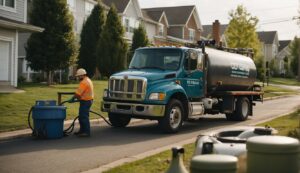Nitrogen pollution is a growing problem in Suffolk County, affecting shellfish and aquatic vegetation while contributing to harmful algae blooms (HABs). Between 1987 and 2005, nitrogen levels in the Long Island aquifer soared 200%, and they’re expected to continue rising. Suffolk County’s septic improvement program aims to correct the problem by helping homeowners cover the cost of a septic upgrade.
What is the Septic Improvement Program?
Suffolk County’s septic upgrade program is designed to help homeowners install new and upgraded septic systems that reduce that amount of nitrogen that enters the ground from septic and wastewater systems.
Currently, 74% of the residents in the area are using septic systems and cesspools to handle their waste. Most of the nitrogen (70%) found in local bays comes from these outdated systems, which aren’t designed to properly treat wastewater.
Installing an Innovative Alternative (IA) system, which removes nitrates and reduces nitrogen output, would help solve the problem, but there’s just one problem: cost. On average, the cost to replace an outdated system with an approved one is $19,200. Of course, these costs will vary, but the price can be steep for the average homeowner.
The septic improvement program provides grants and financing options to residents to help with the cost of a septic upgrade.
Here’s what the program offers:
- Grants of up to $30,000 for qualifying residents
- 15-year financing at a 3% fixed interest rate
The Community Development Corporation of Long Island Funding Corp will administer the loan program with Bridgehampton National Bank and several philanthropic organizations providing millions of dollars in financial support.
Who is Eligible for a Grant?
Residents must meet the following criteria to be considered for a grant:
- The home must be served by a cesspool or septic system.
- The property cannot have any open or outstanding tax liens.
- The home must have a valid certificate of occupancy or an equivalent.
- Property owners must provide copies of their most recent federal income tax returns.
Properties that are not eligible include:
- Those located in proposed sewer districts.
- Those that are connected to public sewer systems.
- Newly constructed homes.
- Vacant lots.
What Documentation is Needed?
When submitting your grant application, you will need to provide the following documents:
- A copy of the property deed
- A copy of the Certificate of Occupancy (or an equivalent)
- A copy of the property’s most recent tax bill
- Proof of a homeowner’s insurance policy
Some homeowners may also need to provide:
- Copies of the first two pages of their most recent tax returns and the signature page.
- Photos, receipts of service or other proof of a sanitary system failure.
You can apply for a grant here or you can contact us for a free consultation to determine your eligibility and maximize the amount of financial assistance you qualify for.
It’s important to note that applications will be considered on a priority-level basis. Properties in areas of the highest priority will be reviewed and scored first. Homes on less than one acre that are within 0-2 year groundwater travel are top priority.
Do Your Part to Protect Waterways in Suffolk County
The septic upgrade program helps protect waterways – and the drinking water – in Suffolk County. You can do your part by upgrading your outdated system. Grants and financing can make septic replacement a financially feasible option for your property.









